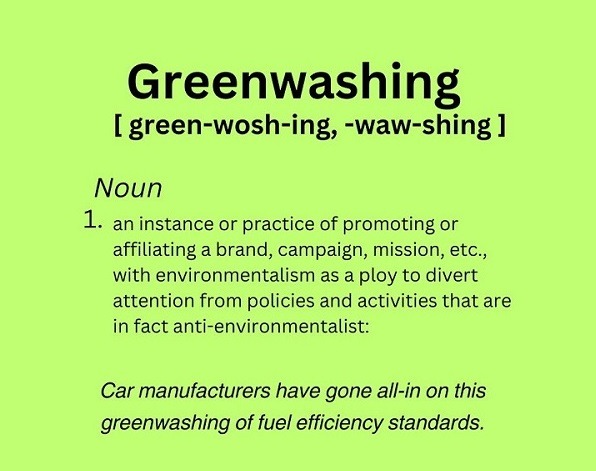Biodegradability and Recyclability compare
Discover the difference between biodegradability and recyclability and why it matters. Learn how each process impacts the environment.
Have you ever wondered about the difference between biodegradability and recyclability? These two terms are often used interchangeably, but they actually refer to distinct processes with different environmental implications. Biodegradability refers to the ability of a material to break down naturally over time, while recyclability pertains to the potential for a material to be collected and transformed into new products. Understanding the distinction between these concepts is crucial in making informed choices about waste management and sustainable consumption. In this article, we will explore the difference between biodegradability and recyclability and why it matters for our planet.
Definition of Biodegradability
Biodegradability refers to the process by which organic materials are broken down and decomposed by natural biological processes, such as the action of bacteria, fungi, and other microorganisms. This natural process converts these materials into simpler substances, like water, carbon dioxide, and biomass, which can be assimilated into the environment without causing harm. Biodegradability is a fundamental property that determines how quickly and effectively a material can be broken down and returned to the natural cycle.
Biodegradation Process
The biodegradation process involves a series of complex biochemical reactions. When organic materials are exposed to environmental factors, such as oxygen, moisture, and temperature, microorganisms begin to break down the complex chains of molecules, such as proteins, carbohydrates, and fats, present in these materials. Through enzymatic reactions, the microorganisms convert these complex molecules into smaller compounds that can be readily metabolized. This metabolic process releases energy that sustains the microorganisms, allowing them to continue breaking down the organic material until it is fully decomposed.
Organic Materials
Biodegradability primarily applies to organic materials, which are derived from living organisms or contain carbon-based molecules. Organic materials can include food waste, plant-based products, wood, paper, textiles, and some types of plastics derived from natural sources. These materials have the potential to readily undergo biodegradation due to their chemical composition, which microorganisms can recognize as a source of nutrients for their growth and metabolism.
Environmental Factors
Several environmental factors influence the biodegradability of materials. Temperature and moisture levels play a crucial role in determining the rate at which biodegradation occurs. Higher temperatures and adequate moisture promote microbial activity and increase the speed of degradation. Oxygen availability and pH levels also affect the biodegradation process. Some microorganisms thrive in aerobic environments with sufficient oxygen, while others can function in anaerobic conditions with limited oxygen. These environmental factors can have a significant impact on the efficiency and effectiveness of the biodegradation process.
Factors Influencing Biodegradability
Several factors influence the biodegradability of materials and determine how quickly and completely they can undergo decomposition.
Chemical Composition
The chemical composition of a material greatly influences its biodegradability. Materials composed of simple and easily digestible molecules, like sugars and starches, tend to biodegrade more rapidly than those with complex structures, such as long-chain polymers. Additionally, the presence of additives, such as preservatives or synthetic chemicals, can affect the biodegradation process, as these substances may be resistant to microbial activity.
Temperature and Moisture
Temperature and moisture levels in the environment are crucial factors affecting the biodegradation process. Higher temperatures generally accelerate microbial activity and enzymatic reactions, leading to faster decomposition. Adequate moisture levels are also essential for microbial growth and the breakdown of organic materials. In arid or extremely dry conditions, biodegradation may be significantly slowed or even halted.
Interaction with Microorganisms
The presence and abundance of specific microorganisms capable of breaking down a particular material play a significant role in biodegradability. Different microorganisms have varying degrees of effectiveness in metabolizing specific organic compounds. The availability of these microorganisms in the environment can determine the biodegradability of a material.
Time Required
The biodegradation timeframe varies depending on the material and environmental conditions. Some materials can decompose within weeks or months, while others may take years or even decades to fully biodegrade. It is crucial to consider the intended lifespan and disposal method of materials to ensure they align with their actual biodegradation timeframe.
Conditions in Landfills
Landfills, where large amounts of waste are disposed of, often lack the necessary conditions for efficient biodegradation. The compacted waste and limited oxygen supply in landfills create anaerobic conditions that slow down the biodegradation process. As a result, biodegradable materials may take much longer to decompose in landfills compared to other natural environments, such as composting facilities.
Importance of Biodegradability
Understanding the importance of biodegradability helps in developing sustainable waste management practices that minimize the environmental impact of our actions.
Reduction of Waste
Biodegradability provides a means to reduce the amount of waste generated. By opting for biodegradable materials, we can choose products that have the potential to be safely assimilated into the environment through natural processes. This reduces the accumulation of waste in landfills and contributes to the overall reduction of waste generation.
Minimization of Environmental Impact
Promoting biodegradability helps minimize the environmental impact of waste disposal. By utilizing materials that can be broken down and returned to the natural cycle, we reduce the need for resource-intensive waste management practices, such as incineration or long-term storage in landfills. Biodegradability mitigates the release of harmful substances into the environment, reducing pollution and potential harm to ecosystems.
Sustainable Waste Management
Incorporating biodegradable materials into waste management strategies promotes sustainability by aligning with nature’s ability to recycle essential nutrients. This approach supports circular economy principles, focusing on the efficient use of resources, minimizing waste generation, and fostering the regeneration of natural systems. By prioritizing biodegradability, we can work towards a more sustainable and environmentally conscious waste management system.
Definition of Recyclability
Recyclability refers to the ability of a material to be processed and transformed into new products through recycling. Recycling is the process of collecting, sorting, reprocessing, and manufacturing new items from discarded materials. It involves converting waste materials into valuable resources, reducing the need for raw materials extraction, and addressing the growing concern of waste accumulation.
Recycling Process
The recycling process involves several steps that ensure the effective transformation of discarded materials into new products.
Collection and Sorting
The first step in recycling is the collection and sorting of materials. This involves separating different types of materials, such as plastics, glass, paper, and metals, to ensure that each can be appropriately processed. Collection methods can vary, from curbside recycling programs to specialized drop-off centers, and are often facilitated by waste management organizations or local authorities. Efficient sorting techniques are vital to maximize the value and quality of recyclable materials.
Material Reprocessing
Once materials are collected and sorted, they undergo reprocessing to prepare them for manufacturing new products. This step often involves cleaning, shredding, grinding, or melting the materials to transform them into a raw form suitable for further processing. The specific reprocessing techniques depend on the type of material being recycled and the end products desired.
Manufacturing New Products
After reprocessing, the recycled materials are ready to be incorporated into the production of new goods. Industries use these materials as substitutes for virgin materials, reducing the demand for resource extraction and minimizing environmental impact. The recycled materials are transformed into new products through various manufacturing processes, such as molding, extrusion, or fabrication, depending on the material and the desired item.
Types of Recyclable Materials
Numerous materials have the potential to be recycled, contributing to the conservation of resources and the reduction of waste.
Paper and Cardboard
Paper and cardboard are highly recyclable materials. Through a combination of mechanical and chemical processes, recycled paper and cardboard can be transformed into new products, such as packaging materials, tissue paper, or even new paper products. By recycling paper and cardboard, we can save trees and reduce the need for energy-intensive pulp manufacturing.
Plastic
Plastic recycling has gained significant attention due to the immense environmental impact of plastic waste. Different types of plastics can be recycled by sorting and cleaning them, melting or shredding them into small pellets, and then using them as raw materials for manufacturing new plastic products. Plastic recycling helps reduce the consumption of petroleum and the pollution associated with plastic production.
Glass
Glass recycling involves crushing and melting discarded glass products, such as bottles and jars, to create new glass items. The recycled glass, known as cullet, is mixed with raw materials and melted in furnaces to produce new glass products. Glass recycling conserves energy, reduces landfill waste, and decreases the demand for raw materials used in glass manufacturing.
Metal
Metal recycling is well-established and widely practiced due to the economic and environmental benefits it offers. Various metals, including aluminum, steel, and copper, can be recycled by melting them down and reshaping them into new metal products. Metal recycling reduces the need for extensive mining operations, conserves energy, and helps minimize air and water pollution associated with metal extraction.
Electronics
Electronic waste, or e-waste, recycling is becoming increasingly important as technology advances and electronic devices become more prevalent. Recycling electronics involves disassembling them, separating the different components, and recovering valuable materials, such as metals and precious metals. Proper e-waste recycling reduces the environmental impact of hazardous materials found in electronics, prevents resource depletion, and promotes responsible disposal.
Textiles
Textile recycling aims to extend the life of textiles and divert them from landfills. Recycled textiles can either be transformed into new clothing items through innovative manufacturing techniques or repurposed for other applications, such as insulation materials or cleaning cloths. Textile recycling helps reduce the demand for raw materials used in fabric production and decreases the environmental footprint of the textile industry.
Challenges in Recycling
While recycling offers numerous benefits, there are also various challenges that need to be addressed in order to maximize its effectiveness.
Contamination
Contamination of recyclable materials with non-recyclable items poses a significant challenge to the recycling process. Inadequate sorting, improper disposal, or lack of awareness about recycling guidelines can result in contaminated materials that are difficult to recycle. Contaminants can reduce the quality and value of the recycled materials or render them unsuitable for recycling altogether. Educating the public about proper recycling practices and improving waste management systems can help minimize contamination.
Mixed Materials
Many products are made from a combination of different materials, such as plastic-coated paper or a mix of metals. These mixed materials present difficulties in recycling, as separating and processing them can be complex and resource-intensive. Developing innovative technologies and strategies for handling mixed materials is crucial to improve recycling rates and minimize waste generation.
Lack of Recycling Infrastructure
One of the major challenges in recycling is the lack of adequate recycling infrastructure, particularly in certain regions or countries. Insufficient collection systems, limited recycling facilities, and a lack of financial incentives can impede the efficient recycling of materials. Investing in infrastructure development, expanding recycling programs, and promoting public-private partnerships are essential steps to overcome this challenge.
Limited Market Demand
The demand for recycled materials plays a crucial role in the viability and success of recycling programs. If there is a limited market for recycled products, the value of recycled materials may decrease, making it economically unfeasible for recycling facilities to operate efficiently. Encouraging and supporting businesses and consumers to “buy recycled” helps create stable demand for recycled products, stimulating the expansion of recycling industries.
Complexity of Recycling Processes
Different materials require specific recycling processes, and some materials are more challenging to recycle than others. For example, certain types of plastics or electronic components may require specialized equipment or techniques to recover valuable materials effectively. The complexity of recycling processes can increase costs and pose technical barriers to achieving high recycling rates. Developing simplified and standardized recycling processes is crucial to improving overall recycling efficiency.
Recycling Benefits and Environmental Impact
Recycling offers numerous benefits that contribute to environmental protection and resource conservation.
Conserves Natural Resources
By recycling materials, we can conserve natural resources and reduce the need for extracting virgin materials from the environment. Recycling paper saves trees, recycling metals reduces the demand for mining, and recycling plastic lessens the reliance on petroleum. Conserving natural resources ensures their sustainability for future generations.
Reduces Energy Consumption
Recycling commonly requires less energy compared to the extraction, processing, and manufacturing of products from virgin materials. Recycling aluminum, for example, uses approximately 95% less energy than producing aluminum from bauxite ore. Lower energy consumption in recycling processes translates into reduced greenhouse gas emissions and contributes to efforts to combat climate change.
Decreases Pollution and Greenhouse Gas Emissions
Recovering and recycling materials significantly reduces pollution and greenhouse gas emissions associated with extraction, raw material processing, and waste disposal. By recycling materials, we minimize air and water pollution, conserve water resources, and mitigate the release of harmful substances into the environment. This contributes to improving air quality and protecting ecosystems.
Diverts Waste from Landfills
Recycling diverts waste from landfills, extending their lifespan and reducing the need for new landfill sites. As recyclable materials are diverted from disposal in landfills, valuable resources are kept in circulation, reducing the overall volume of waste generated. This not only reduces the environmental impact of waste but also contributes to a more sustainable waste management system.
Comparison of Biodegradability and Recyclability
Biodegradability and recyclability are two distinct end-of-life options for materials, each with its own considerations and implications.
End-of-life Options
For materials with both biodegradable and recyclable properties, choosing the appropriate end-of-life option is essential. Biodegradability allows materials to return to the natural environment, breaking down into simpler compounds with the assistance of microorganisms. On the other hand, recyclability enables the transformation of materials into new products through reprocessing. Deciding between these options depends on various factors, such as the availability of collection and recycling facilities, the material’s chemical composition, and the intended environmental impact.
Timeframe for Degradation or Reuse
Biodegradable materials can decompose and return to the natural cycle within a relatively short timeframe, ranging from weeks to years, depending on the material and environmental conditions. In contrast, the recycling process usually involves several stages, including collection, sorting, reprocessing, and manufacturing, which can take longer to complete. The timeframe for recycling depends on numerous factors, such as the material, recycling infrastructure, and market demand for recycled products.
Environmental Implications
Biodegradability focuses on the natural breakdown of materials into harmless substances that can be assimilated by the environment. This process helps minimize pollution, reduce waste accumulation, and maintain ecosystem health. Recycling, on the other hand, emphasizes the reutilization of materials to conserve resources and reduce environmental impact. Both biodegradability and recyclability contribute to environmental sustainability, albeit through different mechanisms and considerations.
Sustainability Considerations
Sustainability encompasses social, economic, and environmental aspects. Choosing between biodegradability and recyclability requires a holistic evaluation of the material’s life cycle, considering factors such as resource consumption, waste generation, pollution, and environmental preservation. Sustainable waste management strategies aim to balance these considerations, promote responsible consumption, and minimize overall environmental impact. Taking a comprehensive approach to materials’ end-of-life options is essential to achieve sustainable outcomes.
Potential Solutions and Innovations
Innovation in both biodegradable materials and recycling technologies are driving advancements in waste management practices.
Biodegradable Plastics
The development and use of biodegradable plastics have gained significant attention in recent years. These plastics are designed to break down and decompose more readily than conventional plastics, reducing their persistence in the environment. Biodegradable plastics can be made from renewable resources, such as plant-based materials, and offer potential alternatives to traditional plastics that contribute to pollution and waste accumulation.
Bio-based Materials
Bio-based materials, derived from renewable sources such as plants or biomass, offer environmentally friendly alternatives to conventional materials. These materials can be designed to be both biodegradable and recyclable, combining the benefits of both end-of-life options. By utilizing bio-based materials, we can reduce reliance on fossil fuel-based resources and promote more sustainable waste management practices.
Improved Recycling Technologies
Advancements in recycling technologies are expanding the range of materials that can be effectively recycled. Technologies such as mechanical recycling, chemical recycling, and advanced sorting techniques enable the recovery of more materials from the waste stream, including complex or difficult-to-recycle items. Innovations in recycling processes help increase recycling rates, improve material recovery, and address challenges associated with mixed or contaminated materials.
Design for Recyclability and Biodegradability
Designing products with their end-of-life in mind is a crucial approach to promote both recyclability and biodegradability. By considering the material composition, ease of disassembly, and compatibility with existing recycling systems, manufacturers can ensure that products can be efficiently recycled. Similarly, incorporating materials with proven biodegradability into product design ensures that they can safely return to the environment after use. Designing for recyclability and biodegradability encourages the adoption of sustainable materials and supports circular economy principles.
Conclusion
Understanding the fundamental differences between biodegradability and recyclability is crucial in developing effective waste management strategies. Biodegradability enables organic materials to return to the environment, utilizing natural processes to break them down and prevent waste accumulation. Recyclability, on the other hand, focuses on the transformation of materials into new products, reducing resource consumption and waste generation. Balancing the use of biodegradable and recyclable materials is essential to promote responsible consumption, minimize environmental impact, and foster sustainable waste management practices. By making informed decisions regarding the end-of-life options for materials, we can work towards a more sustainable and environmentally conscious future.






